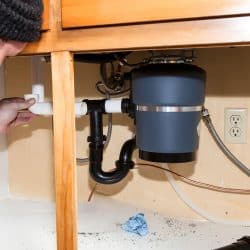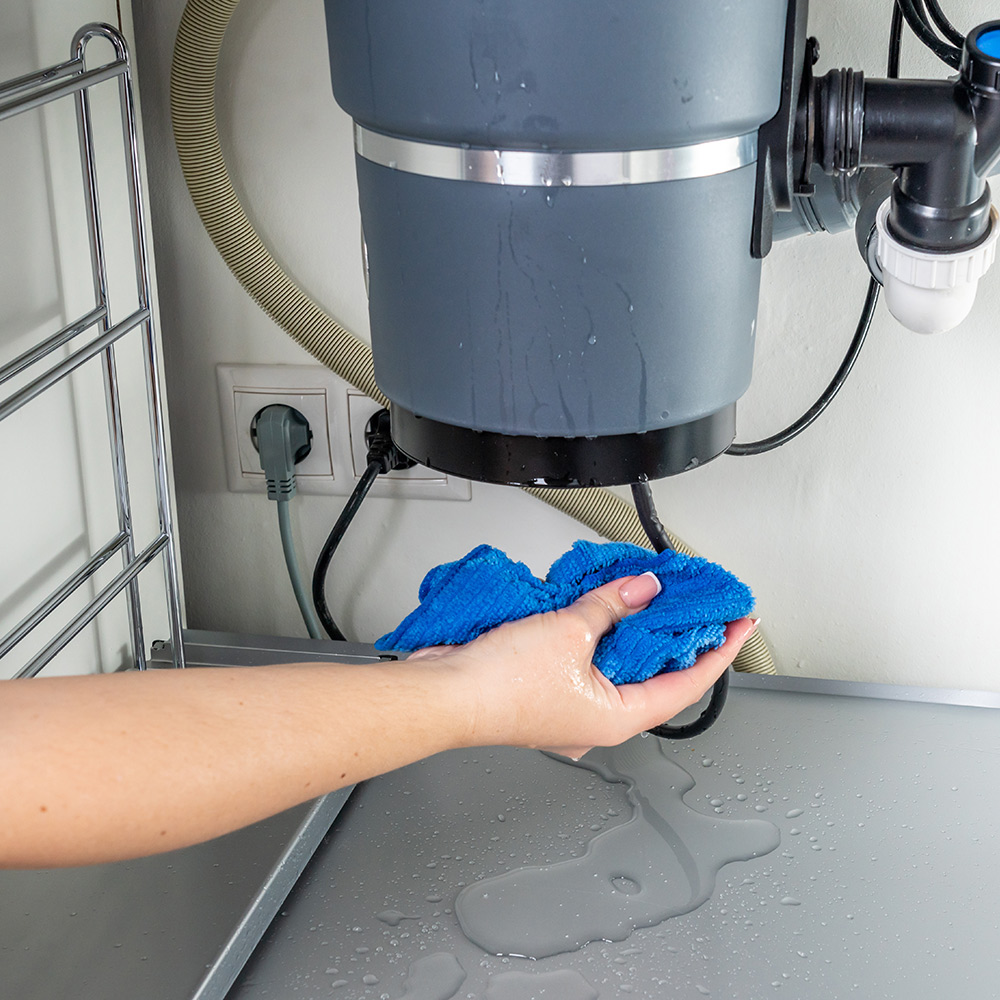Clear Techniques for Repairing a Leaky Garbage Disposal
Clear Techniques for Repairing a Leaky Garbage Disposal
Blog Article
We have uncovered the article about How to fix a pretty consistent leak from my garbage disposal below on the net and felt it made sense to relate it with you on this site.

Garbage disposals are necessary kitchen appliances that aid in getting rid of food waste efficiently. Nonetheless, a leaking garbage disposal can be a frustrating and unpleasant issue to deal with. The good news is, lots of leaks can be taken care of easily with a couple of easy steps. In this article, we will go over just how to repair a dripping garbage disposal properly.
Intro
Waste disposal unit are mounted under cooking area sinks and are designed to shred food waste right into smaller sized items, enabling it to travel through the plumbing system conveniently. While these devices are typically reputable, leakages can take place over time due to wear and tear, loosened connections, or damages to the system.
Common Sources Of Leaks in Garbage Disposals
Worn Seals and Gaskets
Seals and gaskets play a crucial function in preventing water from leaking out of the waste disposal unit. Over time, these elements can wear away, resulting in leakages around the disposal device.
Loose Connections
The connections between the waste disposal unit and the pipes system can come to be loose in time, triggering water to leakage out throughout procedure.
Splits or Openings in the Disposal Device
Physical damages to the waste disposal unit, such as splits or openings in the real estate, can additionally cause leakages.
Determining the Resource of the Leakage
Prior to attempting to deal with a leaking waste disposal unit, it is necessary to identify the source of the leak. This can usually be done via aesthetic assessment or by carrying out basic tests.
Visual Evaluation
Evaluate the waste disposal unit system carefully for any type of signs of water leakage. Pay close attention to areas around seals, gaskets, and link factors.
Examining for Leakages
One way to check for leakages is by running water through the disposal system and looking for any kind of visible indicators of leak.
Devices and Products Needed for Taking Care Of a Dripping Garbage Disposal
Before beginning the repair service procedure, gather the essential devices and products, including a screwdriver, flexible wrench, plumbing professional's putty, substitute seals or gaskets, and epoxy or patching material for fixing cracks or openings.
Step-by-Step Guide to Fixing a Leaking Garbage Disposal
Shut off the Power
Before attempting any kind of repair work, make certain that the power to the garbage disposal unit is shut off to stop the threat of electrical shock.
Locate the Leak
Determine the precise place of the leakage and figure out the reason.
Tighten up Links
Make use of a wrench to tighten any loosened links in between the disposal system and the pipes system.
Replace Seals or Gaskets
If the leak results from used seals or gaskets, get rid of the old components and replace them with new ones.
Patching Splits or Holes
For fractures or openings in the disposal device, usage epoxy or a suitable patching material to seal the broken area.
Checking the Garbage Disposal After Repair
As soon as the repair work is full, test the garbage disposal by running water via it to ensure that the leak has been fixed.
Preventive Upkeep Tips to Prevent Future Leakages
To avoid future leakages, it is vital to execute normal upkeep on your waste disposal unit. This includes keeping it clean, staying clear of placing non-food products or difficult objects down the disposal, and occasionally looking for leaks or other concerns.
Conclusion
In conclusion, taking care of a dripping waste disposal unit is a reasonably uncomplicated procedure that can be finished with basic devices and products. By following the actions outlined in this article and exercising preventive upkeep, you can maintain your garbage disposal in good working condition and stay clear of pricey fixings in the future.
HERE’S HOW TO FIX YOUR GARBAGE DISPOSAL
WHAT TO DO IF SOMETHING IS STUCK IN YOUR GARBAGE DISPOSAL
If the impeller won’t turn, there’s probably something stuck in the disposal. It could be a steak bone or peach pit, although plumbers report pulling all sorts of inappropriate objects out of disposals, such as bottle caps or aluminum foil. Make sure power to the disposal is off, and look inside to see if you can see the source of the jam.
Never stick your fingers in a disposal. Pull out anything you see with tongs or pliers.
If the disposal still won’t work, it may be time to call a plumber or consider buying a new disposal. GEM Plumbing & Heating is here for all of your garbage disposal needs.
WHAT TO DO IF YOUR GARBAGE DISPOSAL DRAIN IS CLOGGED
Take everything out from underneath your sink and put a bucket or other container under your disposal to catch any water that drains out. Disconnect your disposal from the power supply. If it’s plugged into a wall outlet, unplug it. If it’s hardwired into an electrical box, go to the electrical panel and turn off the breaker for the disposal. Pour ¼ cup of baking soda into the drain, followed by ½ cup of white vinegar. Give the solution a few minutes to fizz and do its work. Look into the disposal with a flashlight to see if you can see an object that might be causing the clog. If you see it, remove it using tongs or pliers. MORE TIPS ON DEALING WITH A CLOGGED GARBAGE DISPOSAL
Never use drain cleaner in a garbage disposal. It can damage the plastic parts inside the disposal. You can also be splashed with the caustic liquid while working to clear the clog. Beware! Never stick your fingers into a garbage disposal. Trust us — not a good idea. In many instances, your dishwasher drains through your garbage disposal. This allows the disposal to grind any large food particles that may be drained out of your dishwasher. There are some jurisdictions, however, where the plumbing code prohibits such a connection. WHAT TO DO WHEN YOUR DISHWASHER DRAINS THROUGH THE DISPOSAL
Run some water in the sink so your plunger has at least a ½-inch of water to create a seal and plunge vigorously up and down several times. You may need to repeat this several times. Run hot water down the drain to clear any residue that remains.

We were shown that report on Why Is through a good friend on a different domain. Do you know somebody else who is intrigued by the topic? Please feel free to promote it. Thanks a lot for your time spent reading it.
Get An Estimate Report this page